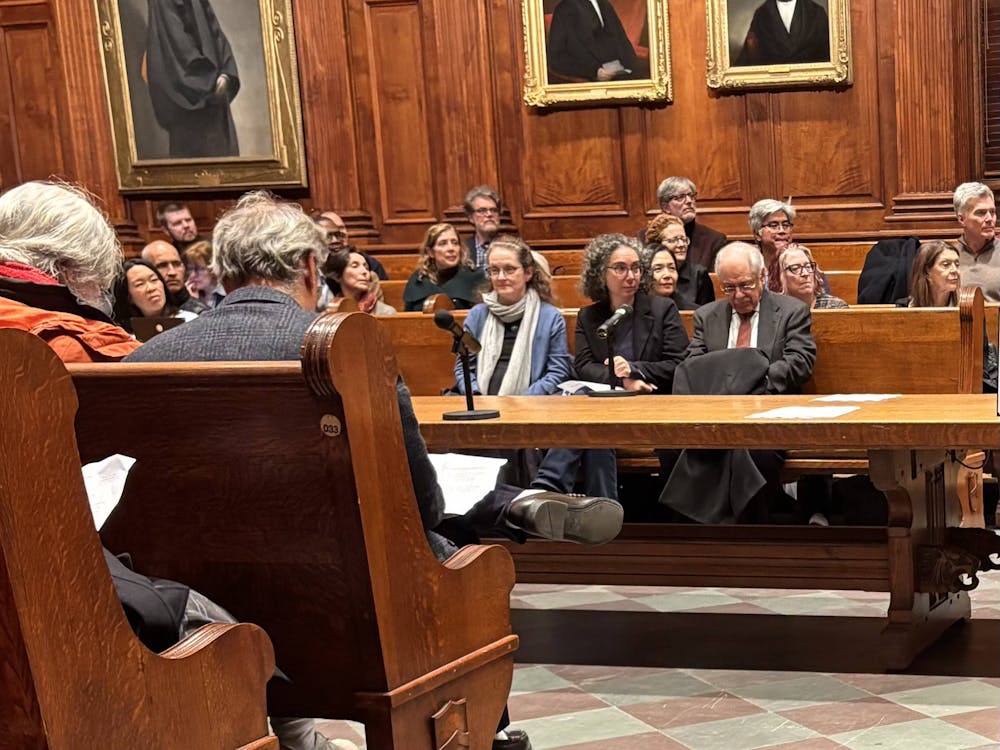Saltzberg's background in physics and his experiences as an undergraduate at the University have prepared him to work as both an experimental particle physicist at UCLA and the science adviser for the CBS sitcom.
"The Big Bang Theory," which premiered in 2007 on CBS and will begin its sixth season this Thursday, chronicles the frequently awkward lives of four researchers at the California Institute of Technology, in addition to that of their neighbor, a local waitress. One of the main characters, Leonard Hofstadter, is an experimental particle physicist, mirroring Saltzberg's real position. Leonard, from New Jersey, got his fictional Ph.D. at Princeton. But Saltzberg said he's not responsible for the Princeton references.
Instead, Saltzberg, as the show's science adviser, adds scientific language into the scripts and checks the facts already there.
"I usually give them some choices, because sometimes they want something very long that sounds like gobbledygook and other times something shorter," Saltzberg said. "[The writers] always insist on getting it right. I'll always tell them what's up and make it their choice, but they never want anything to be wrong."
Saltzberg's path to "The Big Bang Theory" started while at the University, where he was involved in both physics research and film. He recalled putting together a short comedy film with friends using funding from Forbes College - Saltzberg lived in the Annex, which he described as "a cinder block box."
"It was a spoof of Indiana Jones ... I had Hollywood in my blood," Saltzberg said of the film he and his friends made in college. "We did the editing through Media Services, where I had a job I used to do to make a little extra money. I used to show films for a lot of the film classes and other social science classes. It was great since I got to see a lot of old films and I didn't have to take the classes."
In addition to time spent filming and showing films, Saltzberg worked on the Princeton Cyclotron, a particle accelerator still housed in Jadwin Hall. While an undergraduate, Saltzberg - who still keeps his undergraduate senior thesis in his office at UCLA - studied gamma ray spectroscopy under former physics professor Jeremy Brown, the current president of Dowling College. Brown said Saltzberg was very talented at performing experiments in the lab and had a firm grasp on the material with which he was dealing.
"He was really a very conscientious student, and a very good guy in terms of having a good grounding in life," Brown said. "I'm very proud of all the things that he's done with his career, and it's terrific that he's stayed with physics and been successful in that field."
Brown said he watches "The Big Bang Theory," and joked that he does so to make sure Saltzberg gets the science right.
Saltzberg said he is mailed a script and notified whenever there are updates. He reviews the scripts to check for scientific accuracy, since the writers often fill in science themselves.
The most visible contribution that Saltzberg makes to the show involves the complex equations on the dry-erase whiteboards seen in Leonard's apartment and office.
"I'll put up the whiteboards on each episode. I write [the equations] out on paper with felt tip pens, scan them and send them to the set decorator, who is amazingly able to recreate my handwriting," Saltzberg said.

Saltzberg has a blog called "The Big Blog Theory" in which he explains the equations that he's put in various episodes.
Saltzberg mentioned that for the taping of this season's fourth episode, 30 scientists from NASA's Jet Propulsion Laboratory - famous for the Mars Curiosity Rover - came to watch the show. He tailored the equations on the whiteboards to center around Curiosity.
Saltzberg is well qualified to help get the show's science right. After his time at Princeton he obtained a Ph.D. in physics from the University of Chicago, where he worked at the Fermilab Tevatron, another particle accelerator.
He conducted postgraduate work at the European Organization for Nuclear Research and is currently working on building new detectors for the Large Hadron Collider, which will be used for research following up on this summer's discovery of the Higgs boson particle. Saltzberg's work at UCLA took him to Antarctica, where he used particle detectors carried by balloons as part of his research.
"Here I am now, over 20 years later, and my two fields of research involve ballooning and particle accelerators," Saltzberg said, referencing part of his thesis topic. "So you might think that I haven't moved that far from my senior thesis."
In addition to making comments on the scripts, Saltzberg attends every taping of the show and fields urgent calls when a decision needs to be made quickly. He also corresponded with the writers while he was in Antarctica and was asked to advise on proper wardrobe for the characters' fictitious trip to the Arctic, which took place at the end of season two.
"Another thing I did last week was that they wanted some realistic-looking electromagnets, and that's not something you can make very quickly or purchase very easily," Saltzberg said. "I had some of them in my lab, so they just drove a truck over here to UCLA and borrowed them."
Saltzberg has not yet incorporated his senior thesis into the show. He did say that he would try "to get something in from these old days."







